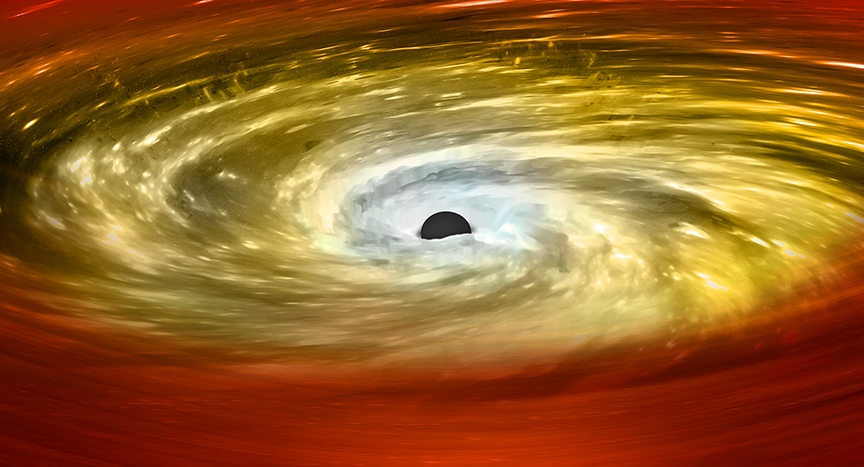Unbound and Out: Boosted by black holes, stars speed off, leaving clues behind
Space oddities may help reveal dark matter and other secrets in the Milky Way. Astronomer Warren Brown explains.
In April, the European Space Agency released the second massive trove of data from Gaia, a spinning, scanning satellite that for nearly five years has been spying on a billion stars. Its goal is to produce a three-dimensional stellar map, enabling a new age of precision astronomy. Like other stargazers, Warren Brown of the Harvard-Smithsonian Center for Astrophysics has plunged headfirst into Gaia’s data. He’s hoping to find space oddities.

JAMES PROVOST (CC BY-ND)
He has found some notable ones before. In 2005, Brown identified a young star speeding at 850 kilometers per second through the Milky Way’s lonely hinterland, called the halo. The star is traveling so fast that it’s unbound, which means that eventually, it will escape the galaxy. Brown coined the term “hypervelocity star” to refer to this breed of superfast stellar travelers.
Brown suspects that the star was flung by the enormous black hole that lies at the center of the Milky Way. The black hole, about 4 million times the mass of the sun, is so powerful that astronomers classify it as supermassive. Black holes are usually thought of as pulling things toward themselves, but they can also act like cosmic slingshots, Brown says. And their ammo can be as big as stars. Once shot, tossed stars may get a one-way ticket out of the galaxy’s grasp.
Read more at Knowable magazine here.
